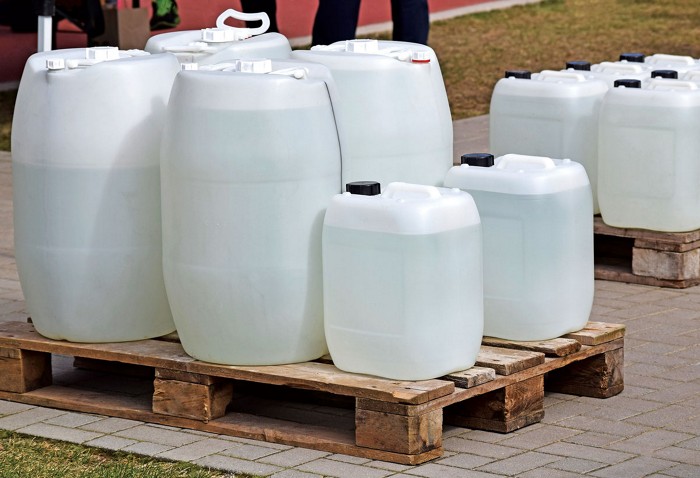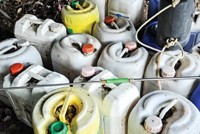Advertisement
Grab your lab coat. Let's get started
Welcome!
Welcome!
Create an account below to get 6 C&EN articles per month, receive newsletters and more - all free.
It seems this is your first time logging in online. Please enter the following information to continue.
As an ACS member you automatically get access to this site. All we need is few more details to create your reading experience.
Not you? Sign in with a different account.
Not you? Sign in with a different account.
ERROR 1
ERROR 1
ERROR 2
ERROR 2
ERROR 2
ERROR 2
ERROR 2
Password and Confirm password must match.
If you have an ACS member number, please enter it here so we can link this account to your membership. (optional)
ERROR 2
ACS values your privacy. By submitting your information, you are gaining access to C&EN and subscribing to our weekly newsletter. We use the information you provide to make your reading experience better, and we will never sell your data to third party members.
Persistent Pollutants
Specially treated plastic containers may spread PFAS
Fluorine-treated jugs and industrial drums can contaminate products, US EPA says
by Cheryl Hogue
March 11, 2021
| A version of this story appeared in
Volume 99, Issue 9

Specially treated plastic containers could be widespread sources of toxic per- and polyfluoroalkyl substances (PFAS) in the environment, the US Environmental Protection Agency says.
The EPA is asking manufacturers of pesticides and other substances stored in plastic containers treated with fluorine to check their products for PFAS even if these compounds aren’t among the ingredients. Companies that find these hazardous, extremely environmentally persistent compounds should contact the EPA “and take action to remove contaminated product,” the agency says.
Fluorinated containers are widely used—not just for pesticides and commercial chemicals but also for food products, the EPA says. The agency is working with the US Food and Drug Administration and the Department of Agriculture on checking a variety of products stored in fluorinated containers for the presence of PFAS.
Of concern are high-density polyethylene (HDPE) containers that are treated inside and out with fluorine.
“HDPE containers are subjected to fluorine elemental gas at pre-determined concentrations and under elevated temperatures,” according to an EPA memo. This technology “improves container stability, and is intended to make containers less permeable, reactive and dissolvable.”
The problem is that during the fluorination of HDPE containers, which include consumer-sized jugs and industrial drums, “PFAS compounds may be formed and then partly leach into the products inside the containers,” the agency says. In a small-scale laboratory test that involved rinsing fluorinated containers with methanol, the EPA found eight perfluorinated carboxylic acids each with 4-11 carbons in concentrations of 20–50 ppb.
The action follows the discovery of PFAS in a mosquito spray containing none of these “forever chemicals” as formulated. Subsequently, the EPA determined that the PFAS had migrated from containers into the pesticide solution.
The agency is consulting with industry groups including the American Chemistry Council (ACC), the largest trade group for the US chemical industry; CropLife America, which represents pesticide makers; and the Household and Commercial Products Association about this problem. In a statement, the ACC says, “EPA is still collecting information on this matter so it’s premature to draw specific conclusions until further work is conducted by EPA.”





Join the conversation
Contact the reporter
Submit a Letter to the Editor for publication
Engage with us on Twitter